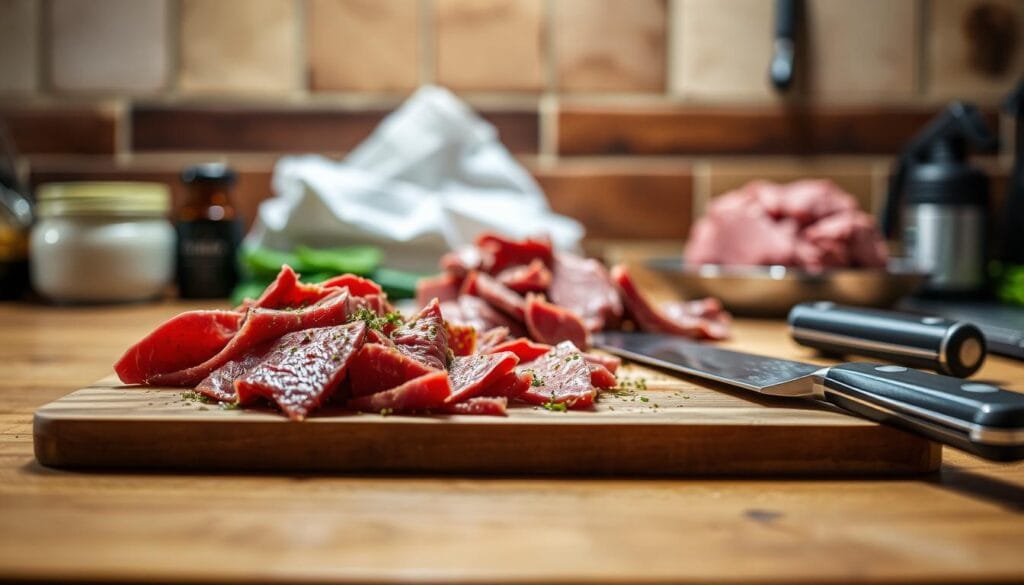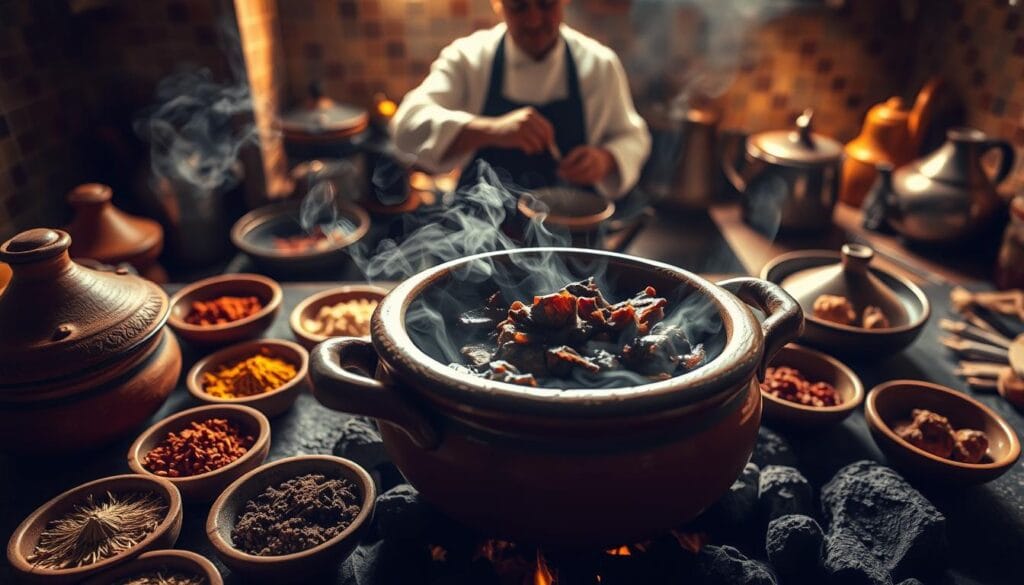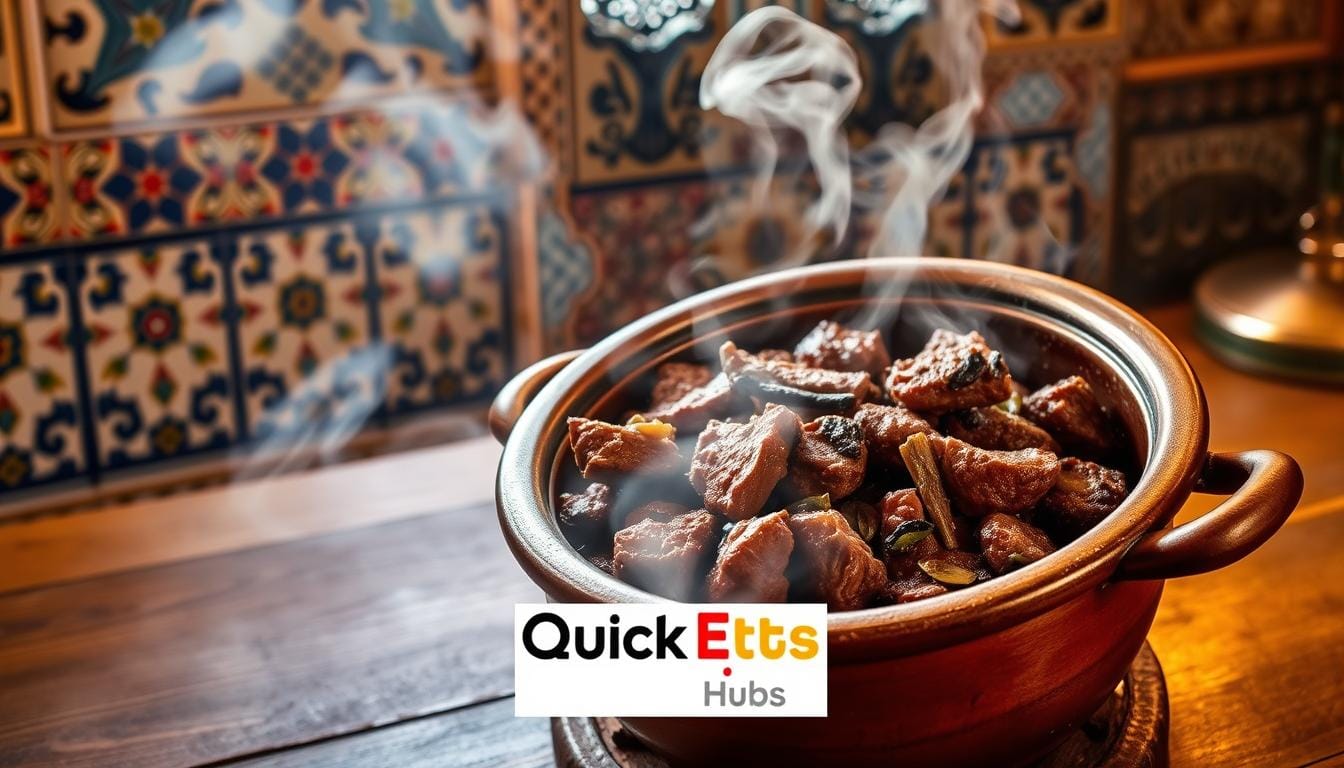Imagine a dish that transports you to the heart of Morocco, where every bite tells a story of tradition and flavor. Beef Tagine is more than just a meal; it’s an experience that connects you with centuries of culinary history. This slow-cooked stew is a masterpiece of aromatic spices, tender beef, and vibrant vegetables, all harmonizing to create a truly unforgettable taste.
At the core of this recipe is the art of slow cooking. Layering spices like cumin, cinnamon, and ginger creates a depth of flavor that only time can enhance. As the ingredients meld together over hours, the result is a dish that’s both hearty and refined. Whether you’re using a traditional clay tagine or a Dutch oven, the process remains the same: patience transforms simple elements into something extraordinary.
The beauty of this beef tagine lies in its wholesome, authentic ingredients. With tender chunks of beef, perfectly cooked vegetables, and a touch of sweetness from prunes, every spoonful is a testament to the simplicity of genuine cooking. No shortcuts, just time-honored techniques that ensure a meal that’s as nourishing as it is delicious.
Table of Contents
Introduction to Moroccan Beef Stews
Step into the aromatic world of Moroccan cuisine, where every dish tells a story. Moroccan beef stews, known for their rich flavors and cultural depth, have been a cornerstone of family gatherings and celebrations for centuries.
Discovering the Rich History
Moroccan beef stews, like the beloved tagine, have a history that dates back to ancient times. These hearty dishes were crafted by resourceful cooks who transformed simple ingredients into something extraordinary. The slow-cooked nature of these stews allowed families to prepare meals that simmered for hours, filling homes with irresistible aromas. Over time, these humble dishes evolved into celebrated culinary traditions, cherished across generations.
Cultural Significance in Moroccan Cuisine
In Moroccan culture, beef stews are more than just meals—they’re a symbol of hospitality and togetherness. The preparation process often involves layering aromatic ingredients like garlic, onions, and a blend of spices, which are simmered to create a deep, complex flavor profile. The onions, thinly sliced and sautéed to perfection, form the foundation of the dish, while the garlic adds a pungency that balances the sweetness of tomatoes. These elements, combined with the slow simmering process, result in a stew that’s both nourishing and flavorful.
Each tagine served at a Moroccan table carries a sense of pride and heritage. The dish is a testament to the country’s rich culinary history and its ability to bring people together. Whether prepared in a traditional clay tagine or a modern Dutch oven, the result is a meal that honors tradition while inviting everyone to partake in its warmth and flavor.
Key Ingredients for a Flavorful Tagine
Creating an authentic beef stew begins with selecting the right ingredients. Each component plays a vital role in crafting a dish that’s both hearty and flavorful.
Essential Spices and Aromatics
The foundation of a great tagine lies in its spices. Cumin, coriander, and cinnamon are essential for adding warmth and depth. A pinch of cayenne pepper can introduce a subtle kick, while ginger provides a refreshing zing. Don’t forget to season with salt and pepper to enhance the natural flavors of the meat and vegetables.
Quality Beef Cuts and Vegetables
For tender results, choose a chuck roast, a cut that becomes melt-in-your-mouth soft when slow-cooked. Pair it with vibrant vegetables like onions, carrots, and apricots. These ingredients not only add texture but also a burst of color and flavor to your stew.
The careful selection of these ingredients ensures your dish is authentic and delicious. By focusing on quality and balance, you’ll create a meal that’s as nourishing as it is flavorful.
Preparing Your Ingredients and Meat
Before you start cooking, it’s essential to prepare your ingredients and meat properly. This step ensures that your dish turns out flavorful and tender. Start by seasoning the beef with a mix of cumin, coriander, cinnamon, and a pinch of cayenne pepper. Add salt and pepper to taste, making sure each piece is evenly coated.
Seasoning and Searing the Beef
Heat 3 tablespoons of olive oil in a large pot over medium heat. Sear the beef in batches to avoid overcrowding, ensuring a nice brown crust on all sides. This step locks in the juices and flavors. Once seared, set the beef aside on a plate.
Prepping Onions, Garlic, and Other Produce
Add more olive oil if needed, then sauté 2 finely chopped onions until they’re translucent. Add 5 minced garlic cloves and cook for another minute, stirring constantly to prevent burning. These aromatics form the base of your dish, adding depth and sweetness.
After cooking the onions and garlic, deglaze the pot by scraping the bottom with a wooden spoon. This step captures all the caramelized flavors. If the sauce thickens too much, gradually add water to maintain the desired consistency. Use a pot with a tight-fitting lid to trap steam, ensuring the meat stays tender as it cooks.
| Ingredient | Quantity | Preparation |
|---|---|---|
| Beef | 1-2 lbs | Season with spices, sear in olive oil |
| Onions | 2 | Finely chopped |
| Garlic | 5 cloves | Mince |
| Olive Oil | 3 tbsp | For searing and sautéing |
| Water | As needed | For maintaining sauce consistency |
For a detailed recipe and more tips, visit Quick Eats Hub for inspiration. Proper preparation and the right techniques will elevate your dish, ensuring a delicious and memorable meal.

Cooking Techniques for Traditional Moroccan Beef Tagine
Cooking a Moroccan beef tagine is an art that combines ancient techniques with modern convenience. This dish thrives on slow cooking, which allows the flavors to meld beautifully. Whether you use a traditional tagine pot or a Dutch oven, the result is a hearty, aromatic stew.
Using a Tagine Pot vs. a Dutch Oven
A traditional tagine pot is designed with a conical lid that allows steam to condense and drop back into the dish. This method ensures even moisture distribution and enhances the infusion of spices like cinnamon and ginger. On the other hand, a Dutch oven offers excellent heat retention and is a great alternative for those who don’t have a tagine pot.
The slow-cooking process is essential for developing the robust flavors of a Moroccan beef tagine. As the beef simmers, it absorbs the deep, warming spices, creating a tender and flavorful texture. Vegetables like carrots and potatoes are added to balance the dish, making it a complete meal.
Oil plays a crucial role in the cooking process. It helps in searing the beef and distributing heat evenly. This step is vital for locking in the juices and ensuring the meat stays tender. The combination of oil, spices, and slow cooking creates a dish that is both aromatic and satisfying.
| Cooking Vessel | Material | Heat Distribution | Suitability |
|---|---|---|---|
| Tagine Pot | Earthenware | Even with steam circulation | Traditional, ideal for slow cooking |
| Dutch Oven | Cast Iron | Uniform heat retention | Modern alternative, versatile |
Both methods yield a deliciously flavorful Moroccan beef tagine. The choice between a tagine pot and a Dutch oven comes down to personal preference and availability. Either way, the slow-cooking technique ensures a dish that is both nourishing and full of character.

Expert Tips and Tricks for Perfecting Your Stew
Elevate your cooking game with these expert tips to create a truly exceptional stew. Whether you’re a novice or an experienced cook, these insights will help you refine your technique and enhance the flavor of your dish.
Layering Flavors and Managing Moisture
Start by layering your ingredients gradually. Add dried fruits like apricots and a handful of beans to introduce natural sweetness and texture. Use precise measurements for spices—1-2 tsp of cumin and coriander, and 1 tbsp of olive oil for searing. This balance ensures a rich, complex flavor profile without overwhelming the dish.
Slow Cooking Strategies for Tenderness
Browning your chuck roast is crucial. Sear the meat in batches to achieve a deep crust, then slow cook it for 1.5 to 2 hours. This method locks in juices and tenderizes the meat. Deglaze the pot after searing to capture caramelized flavors, adding water as needed to maintain moisture.
Additional Adjustments and Enhancements
Customize your stew by adding almonds for a nutty texture or substituting ingredients to suit your taste. Stir the stew periodically to ensure even cooking. Adjust the moisture levels by adding water or broth, ensuring the sauce remains thick but pourable. These small tweaks can make a big difference in the final result.
Traditional Moroccan Beef Tagine: Special Techniques & Flavor Profiles
Discover the unique flavor profile that defines this beloved dish, where warming spices and sweet accents create a harmonious balance. This section explores the techniques and ingredients that make it unforgettable.
Balancing Warming Spices with Sweet Elements
The heart of this recipe lies in its masterful blend of robust spices and sweet ingredients. Paprika and coriander add a warm, earthy depth, while raisins provide a natural sweetness that enhances the overall flavor. This balance is what makes the dish so compelling.
When cooking with a chuck roast, it’s essential to use the right cut of meat. The chuck roast absorbs the flavors beautifully, making every bite tender and juicy. Whether you’re using a traditional tagine pot or an oven, the slow-cooking process ensures that all the flavors meld together perfectly.
Even though many tagine recipes use lamb, this version stays focused on beef. The oven method is a great alternative to traditional slow-cooking, offering consistent heat and even cooking. By using specific quantities of spices like paprika and coriander, you can achieve a rich, complex flavor profile that’s both aromatic and satisfying.
This recipe is dedicated to beef, avoiding ingredients like pork or wine. The combination of raisins and warming spices creates a unique taste experience that honors the dish’s heritage. With patience and the right techniques, you can craft a meal that’s both nourishing and full of character.
Conclusion
Bring your culinary journey full circle with this authentic, slow-cooked stew that captures the heart of Moroccan cuisine. Every bite is a testament to the rich cultural heritage and the art of blending flavors.
The dish comes together with a well-developed sauce, enriched by the sweetness of dried apricots and the hearty texture of potatoes. These elements create a harmonious balance that defines the stew’s depth and complexity.
For a truly satisfying meal, serve the tagine with fresh bread or a side of couscous. The stock adds moisture and flavor, ensuring each spoonful is both nourishing and delicious. Pair it with mashed potatoes for a comforting twist.
This recipe honors tradition without using wine or pork, making it a culturally authentic choice. The slow-cooking process, enhanced by aromatic spices, results in a dish that’s as flavorful as it is comforting.
Reheat the tagine gently and store leftovers in an airtight container for up to three days. Share your experience and enjoy the warmth this dish brings to your table.

